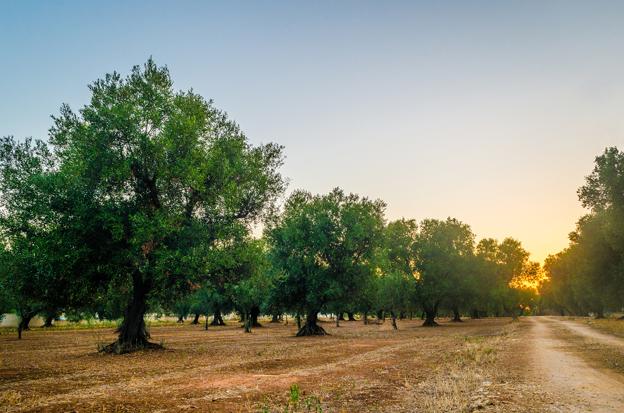With roughly 60 million olive trees, Puglia produces 40% of Italy’s olive oil, which is considered to be some of the best in the country. Want to try it for yourself? Go on a Puglia olive oil tour by following the Strada dell’Olio di Puglia (Puglia’s Olive Oil Road), a gastronomic route in the province of Brindisi stretching for 140 kilometers along ancient farms producing the precious liquid, with the opportunity to taste it and buy it, and museums explaining the history and methods of production of the local olive oil. A trip that reveals the respect and dedication of Pugliese farmers toward the production of an extraordinary food product, well-known for its healthy qualities.
The starting point for this itinerary is the Museo dell’Olio in San Vito dei Normanni, an olive oil museum housed in a former Dominican convent. The museum relates the history of olive oil, explains the craftsmanship involved in its production, and highlights the importance of farming traditions as precious heritage for future generations. Everyday objects and working tools are on display.
Another museum worthy of a stop is the Olive Oil Museum in Fasano, housed in a former Benedictine property, which was turned into a ‘masseria’, ancient fortified farms typical of Puglia, at the end of the 18th century by the Amati Colucci family, who still owns it today and has set up the museum in the rooms of the ancient frantoio (mill). The property is surrounded by olive groves producing the Ogliarola, Leccino and Frantoio varieties, considered some of the best. The museum displays a collection of ancient tools, like grinding stones, wooden and metal presses, basins, mortars, ropes, harnesses for the mules, jars, bottles, and more.
In the area around Brindisi, including the towns of Ostuni, San Vito dei Normanni, Cisternino and Ceglie Messapica, the Olio di Collina di Brindisi is produced. The most common variety of olive here is Ogliarola. This fruity and delicate oil matches well with any kind of dish, from meat to seafood to vegetables, and can even be used in the preparation of sweets. It has been produced in the area since Roman times, as testified by the presence of very ancient olive trees in Fasano and Ostuni.



